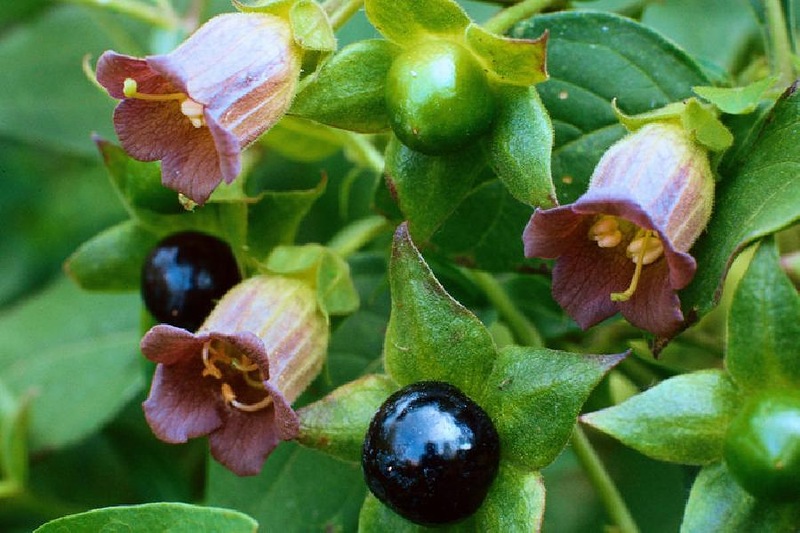Medicinal Action and Uses – Narcotic, diuretic, sedative, antispasmodic, mydriatic.
Belladonna is a most valuable plant in the treatment of eye diseases, Atropine, obtained during extraction, being its most important constituent on account of its power of dilating the pupil. Atropine will have this effect in whatever way used, whether internally, or injected under the skin, but when dropped into the eye, a much smaller quantity suffices, the tiny discs oculists using for this purpose, before testing their patient’s sight for glasses, being made of gelatine with 1/50000 grain of Atropine in each, the entire disk only weighing 1/50 grain. Scarcely any operation on the eye can safely be performed without the aid of this valuable drug.
Belladonna has been used in folk medicine as a remedy for stomach and abdominal pain, asthma, bronchitis, and muscular pain. Belladonna acts primarily on the heart muscle and the smooth muscle in the digestive tract, relaxing it and relieving spasms. It also has a drying effect and, in high doses, can affect the brain, causing overexcitement and hallucinations. Applied externally, it has been used for gout and ulcers. In medicinal plasters, it is currently used to combat intestinal and digestive spasms, excessive perspiration, and bronchial asthma.
Special Cautions
Due to its effects on the brain and central nervous system, Belladonna can cause muscular tremor or rigidity. A variety of side effects – many of them dangerous.
